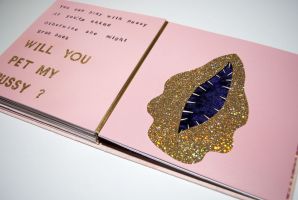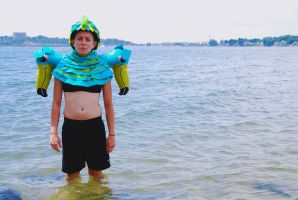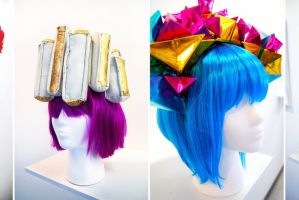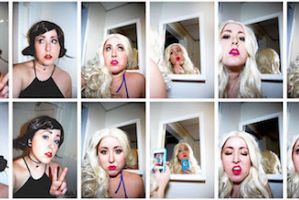- 2-D animation
- 3-D animation
- Abstract
- Abstract Painting
- Alt. process photography
- Animation
- Architect
- Archivist
- Art History
- Arts Writer
- BFA
- Blacksmith
- Book arts
- Book Illustration
- Branding
- Calligraphy
- Caricature
- Carpentry
- Ceramic
- Collaborative/collective
- Collage
- Color Photography
- Comics
- Commercial Photography
- Commission
- Community art
- Concept Art
- Conceptual
- Construction
- Copy photography
- Curator
- Development
- Digital 3-D modeling
- Digital Fabrication
- Digital Media
- Digital Photography
- Documentary
- Eco-Art
- Editor
- Editorial photography
- Engraving
- Etching
- Event photography
- Fab Lab
- Fashion
- Feminist
- Fiber
- Fiber Art
- Figure
- Film
- Film Photography
- Freelance
- Furniture Design
- Gallerist
- Game developer
- Garments
- Gender
- Goldsmith
- Graphic design
- Health and medical
- Home furnishing
- Identity Design
- Illustration
- Installation
- Interactive
- Interior Design
- Interior Painting
- Jewelry
- Kinetic
- Landscape
- Landscape Architect
- Lettering
- Letterpress
- Logo Design
- Master Printer
- Mechanical drawing
- Metal Fabrication
- Metalsmithing
- MFA
- Miniature
- Model
- Model maker
- Monotype
- Mural
- Mural Artist
- Music
- Packaging Design
- Painting
- Performance art
- Photography
- Porcelain
- Portrait
- Portraiture
- Preparator/ Art Handler
- Printmaking
- Product Design
- Public Art
- Public Engagement
- Representational
- Restoration
- Robotics
- Screenprinting
- Sculptor
- Sculpture
- Sign painter
- Social media
- Social Practice
- Soft Sculpture
- Stone
- Stop Motion Animation
- Street Art
- Surface Design
- Teaching artist
- Textile
- UI Design
- Video
- Visual Identity
- Web Design
- Wedding photography
- Window display
- Woodcut
- Woodworking
- Writer
Queer Scouts
Connect me with Shelby Wynne Richardson
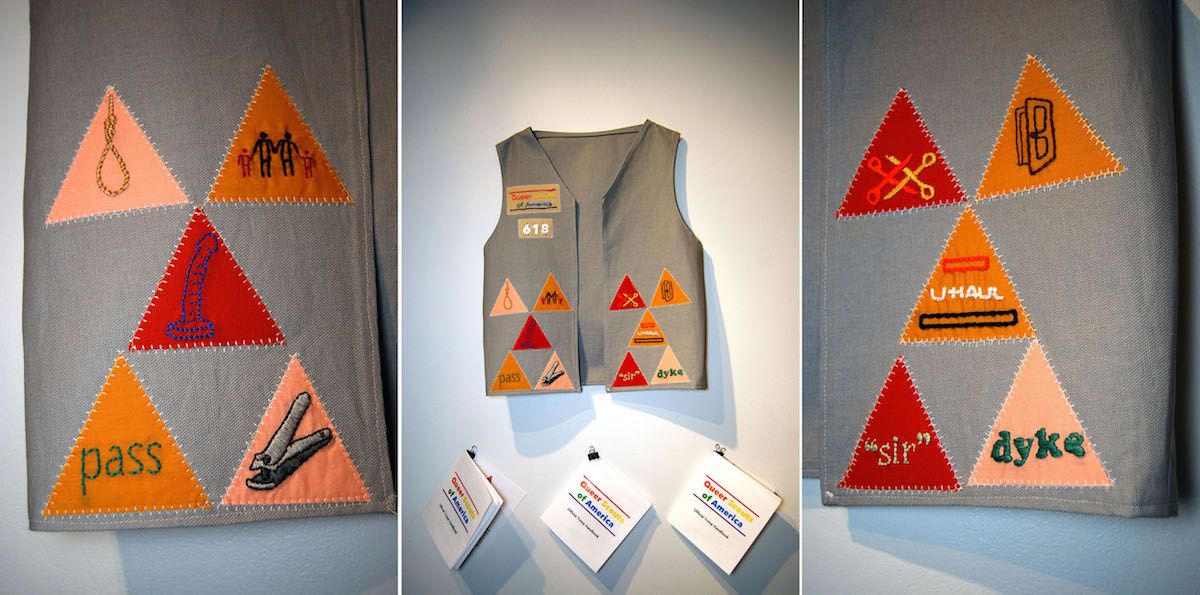
Description
Community connectivity is vital to the creation of visibility and positive identity growth. The celebration of community achievements also provides the space to continue this interconnectedness and dialogue. Richardson?s project titled Queer Scouts is the beginning of a long term exploration into the nuanced complexities of the queer experience. A grey vest adorned with triangular badges is reminiscent of the model of the Boy and Girl Scouts of America. The pink triangle was originally used in Nazi concentration camps as a badge identifier of male prisoners sent there for of their homosexuality. Originally a symbol of shame, it was inverted and reclaimed as an international symbol of gay pride. Richardson?s Queer Scouts are able to earn badges for a variety of achievements, which are outlined in the accompanying Queer Scout Handbook. The achievements outlined are sometimes funny or tongue-in-cheek as a way of combatting the absurdity of many questions still posed to queer individuals, such as whether or not scissoring is really a thing. Other items are unfortunately things that perhaps shouldn?t be achievements at all, such as surviving to the age of 25, when the likelihood of suicide for LGBT individuals finally begins to decrease. Like the pink triangle, Richardson attempts to reclaim power over the hardships of queer people, instead using them as a badge of strength and accomplishment.
Through fostering an inclusive environment, shared narratives, collective achievements, and the possibilities of working together Queer Scouts bring together a network of individuals who are able to empower themselves through communal understanding. Like the appropriated model of girl and boy scouts, creating a space for collective growth also creates opportunity for individual strength. With this strength viewers and participants feel empowered make deeper connections to themselves and others, as well as find pride in the physical bodies and phenomenological experiences that exist because of them. This project provides a pedagogical component that applies to a variety of audiences for the sake of spreading awareness or information. But for the queer audience specifically, there is an even deeper level of affect in finding strength in a collective and knowing one?s narrative is both heard and shared by others.

